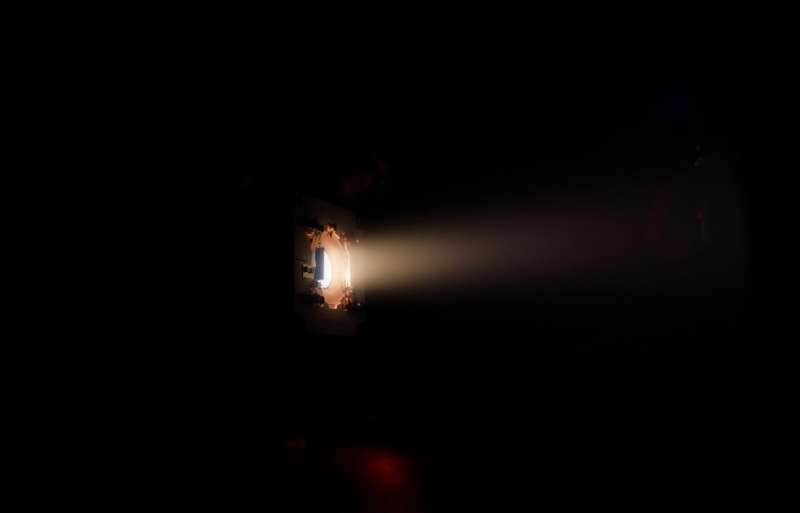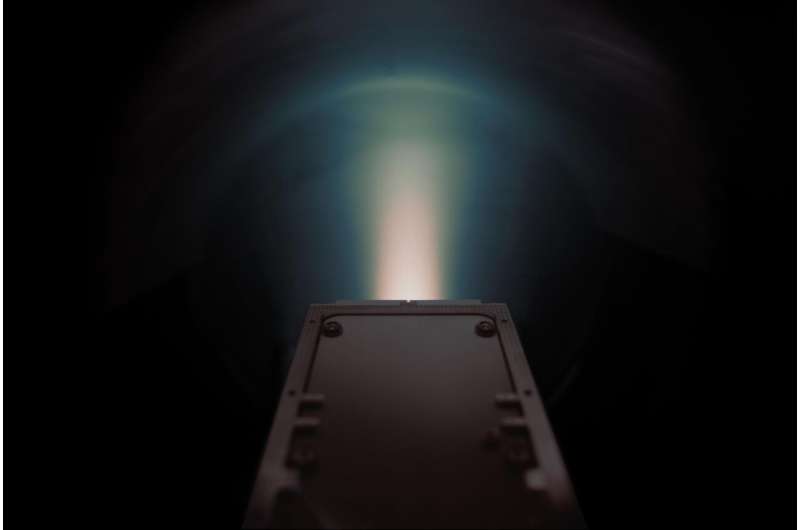Side view of a flight model of the NPT30-I2 iodine electric propulsion system firing in a vacuum chamber. Credit: ThrustMe
A team of researchers from ThrustMe, working with colleagues from Sorbonne Université, has successfully tested the use of iodine as an ionizing agent in an ion-thrusting spacecraft engine. In their paper published in the journal Nature, the group describes their two-year test of the chemical element. The team has also posted a press release describing their work on their site.
Space scientists have long known that the accelerants used to push rockets off launch pads are not ideal for spacecraft once they break free of Earth's gravity. These accelerants are powerful but very inefficient. Orbiting spacecraft do not need such power to remain in orbit—they just need a little push now and then to keep them in the proper orbit. For such craft, ion thrusters have proven to be a better alternative. Ion thrusters provide propulsion by expelling ions out of a port. The ions are created via electricity provided by solar panels to strip electrons off of a neutral atom. Currently, xenon gas is generally used as the neutral atom source. In this new effort, the researchers suggest that iodine is a better choice for the ionizing agent.
Iodine has been suggested as a replacement for xenon before, but the idea has always been discarded because it is so corrosive. The researchers with this new effort have developed a way to prevent corrosion and have tested their ideas in a real spacecraft: a cubesat orbiting the Earth over the past two years.
View looking downstream of a flight model of the NPT30-I2 iodine electric propulsion system firing in a vacuum chamber. Credit: ThrustMe
To overcome the corrosion issue, the researchers used ceramic materials and also stored the chemical in its solid form. One of its advantages is that it sublimates easily. The iodine is heated using power from the cubesat's solar panel and is held in a tank that is directly connected to an ionizing chamber. There, the gas is bombarded with electrons, knocking off other electrons, resulting in a plasma. Positive ions in the plasma are then accelerated by an electrical grid, creating thrust.
Notably, the test craft was small—each side is just 10 centimeters across. And it weighs just 1.2 kilograms. It has been operating in space over the past two years, and the thrusters have been used successfully on multiple occasions. This constitutes proof, the researchers suggest, that iodine is a good choice.
More information: Dmytro Rafalskyi et al, In-orbit demonstration of an iodine electric propulsion system, Nature (2021). DOI: 10.1038/s41586-021-04015-y
Journal information: Nature
© 2021 Science X Network
























